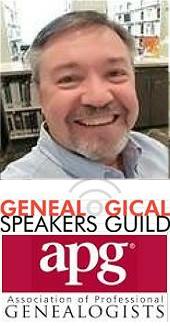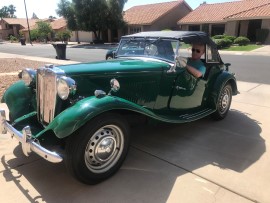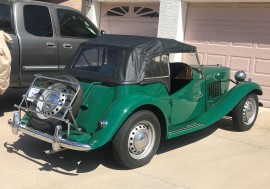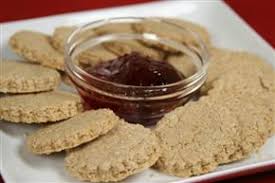|
| May 2018 |
|
|
May Gathering

Cape Breton Island Fiddling (Various sources including Wikipedia)
Cape Breton fiddling is a regional violin style which falls within the Celtic music idiom. Cape Breton Island's fiddle music was brought to North America by Scottish immigrants during the Highland Clearances.
These Scottish immigrants were primarily from Gaelic-speaking regions in the Scottish Highlands and the Outer Hebrides. Although fiddling has changed considerably since this time in Scotland, it is widely held that the tradition of Scottish fiddle music has been better preserved in Cape Breton.
Some well-known fiddlers from Cape Breton are: Natalie MacMaster, her uncle Buddy MacMaster, Ashely MacIsaac, Jerry Holland, Donny LeBlanc, The Rankin Family and The Barra MacNeils.

|
|
Letter from the President, Don Finch
Dear fellow Caledonians:
In a few days we’ll be announcing the results of the election of our Board of Directors for the term July 1, 2018 – June 30, 2020.
According to the Alliance of Arizona Non-Profits, “Serving on a nonprofit board of directors is serious business.
The board is the governing body of an organization which is intended to provide a benefit to the community. Because of this community service attribute, board members are stewards of the mission of the organization on behalf of the community. The board as a whole is the ultimate authority for managing the assets and strategy of the organization.”
.jpg) It has been an honor to serve with our current Board for the past three years and I am looking forward in my soon-to-be new role as Past President in supporting the fine group of men and women who have stood for election. It has been an honor to serve with our current Board for the past three years and I am looking forward in my soon-to-be new role as Past President in supporting the fine group of men and women who have stood for election.
I encourage you to attend our May Gathering on Thursday May 10th at the ICC to meet the new Board. The program that night will focus on the music of Cape Breton Island, one of the first destinations for Scottish emigrants who were forced to leave during the Highland Clearances. Cheers!
Don
|
|
Mesa Caledonian Pipe Band Concert
by Iain Lundy
.jpg) Caledonian Society members and friends were treated to a musical feast by the Mesa Caledonian Pipe Band at St Mark’s Episcopal Church in Mesa. The concert, on Tartan Day (April 7th), doubled as the Society’s April meeting and the music was emotional and stirring, as befits the premier Scottish pipe band in Arizona. Caledonian Society members and friends were treated to a musical feast by the Mesa Caledonian Pipe Band at St Mark’s Episcopal Church in Mesa. The concert, on Tartan Day (April 7th), doubled as the Society’s April meeting and the music was emotional and stirring, as befits the premier Scottish pipe band in Arizona.
Band members were resplendent in the new Mesa Caledonian tartan, which has been specially designed to replace the Ancient Bruce that the band has worn for decades.
Drum major Kevin Conquest was emcee for the day, and explained some of the history and traditions of the band, as well as the tunes selected.
Among the pipe tune highlights were ‘Amazing Grace’ and Leonard Cohen’s ‘Hallelujah”. Drummer Cody Nunez performed a memorable solo drum salute. And there was a delightful display of Highland dancing by Carlie Epstein, accompanied by piper Andy Walker.
A 50/50 raffle and silent auction were held afterwards in the church hall, with all proceeds going to the pipe band. |
|
Scotland's Hidden Gems - Edzell Castle
by Iain Lundy
If there is one aspect of Scotland that entrances visitors, it is the hundreds of castles dotted throughout the country. Some such as Edinburgh, Stirling, and Eilean Donan, are must see attractions. But the downside is they are mega-busy, bustling with tourists every day of the year. It pays to seek out somewhere quieter, more off the beaten track, where you are guaranteed to find not only stunning castle architecture, but also fascinating Scottish history – and in more relaxing surroundings.
.JPG)
Edzell Castle, nestled in the Angus countryside, fits the bill perfectly. It’s an ancient stronghold of the Clan Lindsay and what remains of the castle is looked after by Historic Scotland. The red sandstone tower house looks out over a walled garden and the farmland beyond.
And the nearby village of Edzell has a special significance to a generation of United States Navy personnel. The Royal Air force base there was the site of a US listening post during the Cold War, and was home to thousands of American military over a 37-year period.
If your Scottish ancestry is linked to the Lindsay family, then Edzell Castle should be on your go-to list. The village is located on the B966 road, a few miles off the main A90 between Dundee and Aberdeen. Construction began in 1520 and the walled garden was added 85 years later. The Lindsays sold it in the early 1700s and it became the property of the Earls of Dalhousie, an ancient Scottish peerage held by the Clan Ramsay.
.JPG) Of particular interest are sets of carved panels on the walls of the garden. They represent the Planetary Deities, the Liberal Arts, and the Cardinal Virtues, and are set into the castle walls. A summer house with an intricate oak wall paneling survives. Unlike the most popular castles, Edzell is never busy, and on a sunny day especially, it is a pleasant and relaxing place to visit. Of particular interest are sets of carved panels on the walls of the garden. They represent the Planetary Deities, the Liberal Arts, and the Cardinal Virtues, and are set into the castle walls. A summer house with an intricate oak wall paneling survives. Unlike the most popular castles, Edzell is never busy, and on a sunny day especially, it is a pleasant and relaxing place to visit.
During the Cold War, a US Naval Security Group Activity (NSGA) used the old RAF base at Edzell village as a listening post. The detachment of Americans monitored the North Sea, the British coastline, and the European Continent listening for radio transmissions from the Soviet Union or its allies. |
Research Your Scottish Ancestry
|
|
 Producing the Family History Producing the Family History
by Robert M. Wilbanks IV, B.A.
Chief Genealogist & Historian, C.S.A.
genealogy@arizonascots.com
As I go around speaking and teaching about genealogy, one of the surprising things that I frequently encounter is the astonishment of genealogists when, usually after I make some tangential remark, they are suddenly hit with the realization that they are actually expected, or at least should consider, writing a book on their family history; publishing their research. Well, no, you don’t have to write a book per se, but you certainly want to create something that will preserve your years of hard research in a way that others can enjoy your efforts, or at least continue on with where you left off without having to start over. After all, don’t you want to share with your family the amazing information you found out about your (and their) ancestors?
We are now using a new method to display long articles.
The remainder of this article can be accessed using the tabs below.
The blue tab is open. Click on a gray tab to open it instead.
Each tab area has a scroll bar to the right.
Getting started
I’m not expecting you to become some world renowned or Pulitzer Prize winning author, and you don’t even have to have professional writing skills and abilities. However, in a sense, you are the ‘world renown’ researcher of your family’s history. So, you need to get it out there for all the family to enjoy, creating a presentable story of the exploits, endurances, and experiences of the family that came before.
If nothing else, creating the story for each of your ancestors’ life can actually be a part of the research process as you go. Indirectly, that becomes part of the records evaluation, and the analysis of your findings, family connections and conclusions. For example, creating a timeline, a chronological outline, of your ancestor’s life can help to verify certain discoveries, and even potentially point out glaring issues in your research and findings. This forces you to frequently review your ancestor’s story, and thus your research, to make sure your new findings being added correlate with your previous discoveries.
How to format
And as you create this ‘timeline’ of your ancestor as part of your research, you might as well write it in a storyline format. This way you are building your ancestor’s story as you go, adding new information as you make discoveries. With basic computer skills, using a basic word processor program, you can easily create your ancestor’s story just like any other kind of writing. Also, you can, insert photos and documents, related historical tidbits, etc. Before you know it, if you write it as you research it, you will have a nice written story virtually completed. Instead of later on having to look at your research pile and getting overwhelmed and intimidated at the idea of writing an ancestor’s or family’s complete history.
But there is no need to be intimated by the idea that you have to publish some kind of completed all encompassing written family history. First of all, it doesn’t have to be a published book. If you are into journaling, or scrap-booking, or doing photo albums, that can be a different way to create your ancestor’s story. Or you can create poster-boards, displays, etc. Or, how about a website. We all have different skills. Use yours to your advantage for producing the family history.
A final tip
However, I’m going to let you in on a powerful genealogy secret to writing a reasonable family history. Most of today’s genealogy software, such as RootsMagic, Legacy Family Tree, Family Tree Maker, and more, have the ability to generate narrative reports (in addition to your basic pedigree charts), with decent sentence structure, citations and footnoting, even creating indexes of names and places. They can also create entire books, and even websites. You can usually have the option to save it as PDF file as a completed document, or you can save it as an RTF (Rich Text File) which will allow you to open it in your favorite word processing software and tweak it, insert photos and documents, change formatting, etc.
So, not only do you not have to fear writing your ancestor’s story and family history, but if you do it as you conduct your research, it becomes a powerful part of your research process.
This is another of a series of articles in which I show you the basics of searching for your family history, discussing the use of family records, public records, and online resources nationally and internationally, etc. The previous articles are now available on the Genealogy Section of this website. See “Genealogy” in the menu options at the top of the web page.
|
|
A Musical Encounter - Linda Lambie
by Iain Lundy
.jpg) Society member and prolific violinist Linda Lambie had a close encounter of the musical kind recently with one of America’s greatest and most enduring singers, the legendary Johnny Mathis. Society member and prolific violinist Linda Lambie had a close encounter of the musical kind recently with one of America’s greatest and most enduring singers, the legendary Johnny Mathis.
Linda, who moved to the US from the Falkirk area of Scotland, backed the 82-year old easy listening star at two concerts, one in Phoenix, the other in Tucson.
She said he was a delight to work with and the two posed for the cameras afterwards. Linda is a former member of the Phoenix Symphony Orchestra, and the current Assistant Concertmistress with Arizona Opera.
She was concertmistress of the orchestra contracted to back Mathis at his Arizona dates.
It is not the first time she has worked with Mathis over the years, as well as other stars including John Denver and Tony Bennett. And, no, he didn’t play Misty for her. Her verdict, “He’s fabulous. 82 and still looks and sounds great.”
|
|
Meet Our Member's - Cars
|
Beginning with this issue of the Desert Highlander, we will begin featuring unique and different cars owned by our members and friends.
If you’d like to enter your prized possession, please send a few pics and a brief (50 words +/-) description.


Long-time member and regular newsletter contributor James Grant is proud of his 1953 MG TD. He is researching the car’s journey to America and knows that it was manufactured by the M.G. Car Company Ltd. In Abingdon-on-Thames 65 years ago and resided in St. Louis, MO before ‘retiring’ to Arizona. |
|
|
Caledonian Society Officers
|
|
Cape Breton Oat Cake Memories, with Recipe
by Amy MacKinnon
Taste and smell are two senses that are deeply connected to memory so it’s not surprising that we often associate certain foods with special memories – food and nostalgia go together like fish and chips! A memory I cherish deeply of my childhood in Cape Breton Island, Nova Scotia, is of being the lucky grandkid first at the table when my “Nanna” took the oatcakes out of the oven.
 Those freshly baked oatcakes with their delicious smell wafting through the house were just asking to be eaten. Those freshly baked oatcakes with their delicious smell wafting through the house were just asking to be eaten.
Although it’s not a normal practice off the Island, try smothering some hard butter on that warm treat and you’ll never eat oatcakes any other way nor will you eat anything better.
My mouth is watering as I type this.
As visitors quickly find out when they arrive here on the Island we have our own vernacular, well let’s just say we at times use our own language specific to individual communities and even families.
This unique slang makes me think of “Nannas” oatcakes. Why?
Have you ever been here on the Island waiting to purchase oatcakes and overheard the customer in the line ahead ask for a scone and point to an oatcake? At this point if you were to look at any of the surrounding locals and watch their expressions you’d know they’re saying to themselves “that’s a tourist.”Why, because in Cape Breton an oatcake is just that an oatcake, a scone is altogether different. A scone is what someone from Cape Breton would normally call a tea biscuit. Now the same joy described above I also associate with the memory of getting that first hot tea biscuit out of the oven. Oatcake, tea biscuit/scone bring them all on, hard butter included!
Here is a simple recipe that I’ve used to make oatcakes for friends and family. The feedback has been nothing but positive.
Ingedients: 1 1/2 cups white sugar; 2 tsp. brown sugar; 4 cups of flour; 2 tsp. of salt; 2 tsp. soda; 6 cups of rolled oats; 1 lb. of shortening; 1/2 cup of butter; 1/2 cup of cold water
Preparation: Stir together flour, sugars, salt and soda; add to oats and mix well. Add soft butter and shortening, mixing until absorbed. Do not overmix. Add water and mix for one minute until water is absorbed. Do not overmix. Rollout 1/4 to 1/2 inch thick. Cook at 350 degrees Fahrenheit until lightly brown.
|
Membership Reminder
Membership dues for 2018 are:
- - $25.00 single and $40.00 Family (at the same address)
It's easy - just jump to the Membership Page for the form.
And you can pay by Credit Card at our On-Line Store descibed at the left.
Society Gatherings
Regular membership gatherings are usually held the second
Thursday of each month, many at the Irish Cultural Center,
1106 N. Central Ave., Phoenix - others around the Valley - usually beginning at
6:30 pm. Please check our website for further details.
|
|
|
|
|
[an error occurred while processing this directive]
|